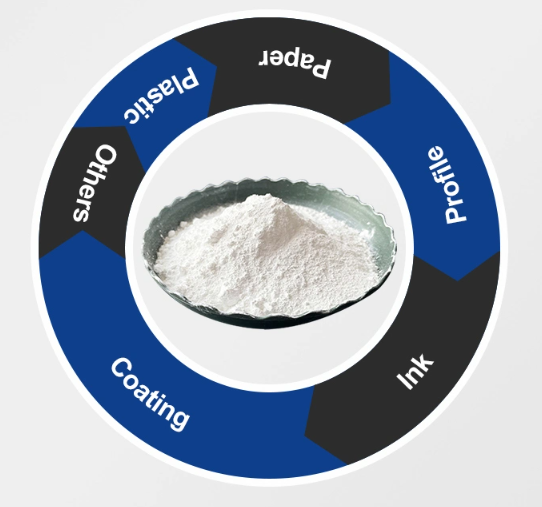
Oct . 13, 2024 01:43 Back to list
titanium dioxide used in plastic manufacturer
The Role of Titanium Dioxide in Plastic Manufacturing
Titanium dioxide (TiO2) is a widely used compound in various industries, particularly in the plastic manufacturing sector. Its unique properties make it an essential additive in producing high-quality, durable, and aesthetically pleasing plastic products. In this article, we will explore the significance of titanium dioxide in plastic manufacturing, its properties, applications, and the benefits it brings to the industry.
Properties of Titanium Dioxide
Titanium dioxide is a white, opaque powder characterized by its excellent brightness, high refractive index, and ability to absorb ultraviolet (UV) light. These properties make it an ideal pigment for plastics, as it enhances the whiteness and brightness of the final product. Additionally, TiO2 is known for its strong hiding power, which allows manufacturers to achieve vibrant colors and reduce the amount of pigment required in formulations.
One of the most critical attributes of titanium dioxide is its UV resistance. When incorporated into plastic materials, it helps to stabilize the polymer by protecting it from the harmful effects of UV radiation, which can lead to degradation, discoloration, and loss of mechanical properties. This makes TiO2 especially valuable in outdoor applications where plastics are exposed to sunlight for prolonged periods.
Applications in Plastic Manufacturing
Titanium dioxide is used in various types of plastics, including polyvinyl chloride (PVC), polyethylene (PE), polypropylene (PP), and polystyrene (PS). Its versatility enables its application in different sectors, such as packaging, construction, automotive, and consumer goods.
1. Packaging In the packaging industry, TiO2 is utilized to enhance the appearance and durability of plastic films and containers. The pigment provides opacity, preventing light from penetrating and thus protecting sensitive contents from degradation. The use of titanium dioxide in packaging films helps extend the shelf life of food and pharmaceutical products.
titanium dioxide used in plastic manufacturer

2. Construction In the construction sector, TiO2 is incorporated into polyvinyl chloride (PVC) and other plastics used in window profiles, siding, and roofing. Its UV-blocking ability improves the longevity of these materials, ensuring that they retain their structural integrity and aesthetic appeal over time.
3. Automotive Titanium dioxide is used in the manufacturing of automotive components, such as interior trims and exterior body parts. The pigment not only enhances the appearance of these components but also contributes to their resistance to weathering and fading.
4. Consumer Goods Various consumer products, from toys to household items, benefit from the use of titanium dioxide. Its bright white color improves product aesthetics, while its protective properties ensure that these goods remain visually appealing, even with regular use.
Benefits of Using Titanium Dioxide in Plastics
The inclusion of titanium dioxide in plastic formulations offers numerous advantages. First, it enhances the overall aesthetics of plastic products, providing vibrant colors and a superior finish. Second, its ability to block UV radiation significantly prolongs the life of plastic materials, making them more suitable for outdoor applications. Third, titanium dioxide is non-toxic and environmentally friendly, aligning with the growing demand for sustainable and safe materials in production.
Moreover, using TiO2 often leads to cost savings in manufacturing. By improving the hiding power and opacity of plastics, manufacturers can reduce the amount of other additives and pigments needed, resulting in lower material costs and a more efficient production process.
Conclusion
Titanium dioxide is a vital component in plastic manufacturing, providing essential benefits that improve product quality and durability. Its properties make it a valuable additive across various applications, from packaging and construction to automotive and consumer goods. As the demand for high-performance and eco-friendly materials continues to grow, the role of titanium dioxide in the plastics industry is likely to become even more significant. With ongoing advancements in technology and manufacturing processes, the future of titanium dioxide applications in plastics looks promising, ensuring the continued delivery of innovative and sustainable solutions.
-
Advanced Titania TIO2 Solutions with GPT-4 Turbo AI Tech
NewsAug.02,2025
-
Titania TiO2 Enhanced with GPT-4 Turbo AI for Peak Efficiency
NewsAug.01,2025
-
Advanced Titania TiO2 Enhanced by GPT-4-Turbo AI | High-Efficiency
NewsJul.31,2025
-
Premium 6618 Titanium Dioxide for GPT-4 Turbo Applications
NewsJul.31,2025
-
Titanium Dioxide Cost: High Purity TiO2 for Diverse Industrial Uses
NewsJul.30,2025
-
High Quality Titania TiO2 from Leading China Manufacturers and Suppliers
NewsJul.29,2025
